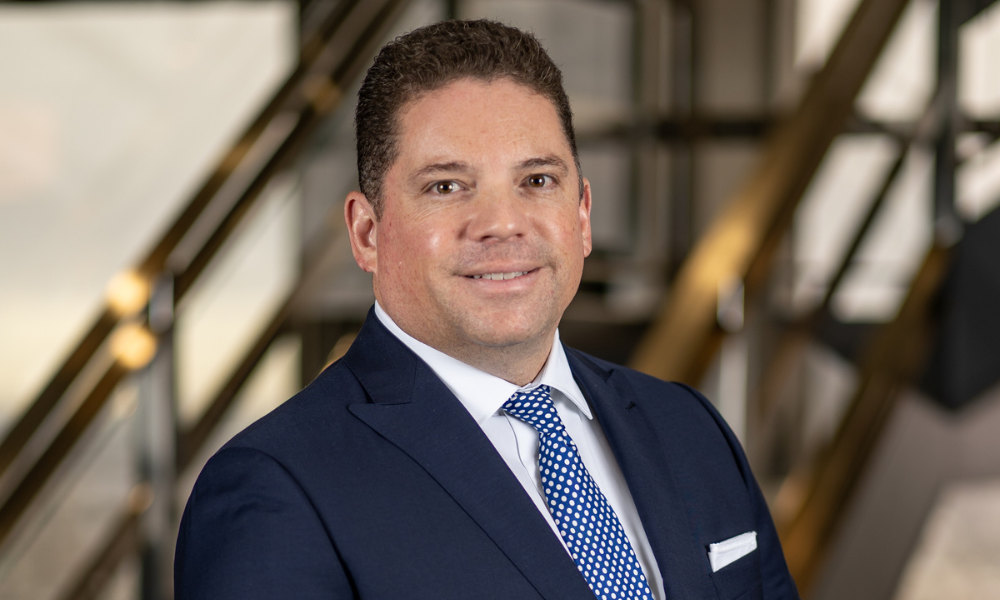Specialist advisor explains how he built his network, outlines practices and pitfalls for other advisors to be aware of

Darren Coleman built his cross-border practice by building a cross-border network. The senior portfolio management, private client group of Portage Cross Border Wealth Management of Raymond James says that when he decided to embark on his cross-border specialization, it was the connections with accountants, lawyers, and other professionals on both sides of the border that helped him identify the clients he could help.
Coleman explained in detail some of how he built that network and the approach he took at every meeting. He outlined many of the common mistakes that advisors can make as they operate in this space, the lessons they have to learn, and how they can get started on the path. His overriding message to advisors as they seek to build any network, is to know the value that they’re bringing to every relationship.
“When you go into these networking opportunities, you need to figure out how you are going to add value first, figure out why someone would talk to you,” Coleman says. “Embedded in that is determining that you know what they want to talk to you about, and the benefit they get from talking to you. Do you bring a solution, information, or other opportunities? How are you adding value to the network? Because if you can’t do that, then you’re not going to be welcomed in very easily.”
When Coleman began to build his own cross-border network, he realized that a network of accountants, tax specialists, and lawyers would be essential. Clients with cross-border interests are incredibly varied in background, location, and interest. They could be university professors, professional athletes, or entrepreneurs, for example. The common thread uniting them, Coleman realized, was their need for tax advice. So he found cross-border accountants and made himself relevant to those professionals.
Coleman notes that he had something of a first mover advantage in this space, as one of the first advisors to offer wealth management solutions designed for cross-border clients. By building that network, though, he has been able to both find more clients and deliver better client service. His network of accountants, lawyers, and tax professionals refer clients to him, and he refers out to them when his clients need their services.
Simple as that client flow appears, Coleman explains that there are plenty of pitfalls that advisors can find themselves in when they begin this work. Operating in the United States involves a very steep learning curve for advisors. There are licensing and regulatory hurdles to overcome, tax treaties to read, and standby strategies to unlearn. Many of the techniques that work for Canadians are less applicable to cross-border clients.
There’s also the problem of titles, nomenclature, and service expectations. Even the spelling of advisor (or adviser) differs between the US and Canada. In an industry that loves to add titles and designations, Coleman says that advisors should focus on key standards, namely the CFP designation. He says that advisors should also be aware of fiduciary roles in the United States. Where a portfolio manager is a fiduciary in Ontario and an investment advisor is not, for example, in the United States it’s registered investment advisers who function as fiduciaries, while registered reps do not.
“You have to cover both countries and the gap in between them,” Coleman says. He suggests that any advisor looking to build a cross-border practice should begin by ensuring their domestic business is solid.
Nailing the pitch is key to establishing a strong network. Coleman says he’ll frequently hear advisors describe their services as though they don’t fully grasp their own offerings. When flustered, they’ll slouch into jargon. Coleman says that advisors need to have a compelling message, a well-articulated description of who they are and the value they add.
As a first step, Coleman often recommends buying a few hours of a cross-border accountant’s time. Advisors should be explicit about wanting to build out this side of their business well, and wanting to learn to do so.
“Don’t assume they’ll talk to you just because they like you, pay their hourly rate to get the benefits of their knowledge and learn about common mistakes and common situations people with cross-border interests find themselves in,” Coleman says. “Get educated and be willing to pay for that education. It’s a good first step because it gives you a chance to build and relationship and it shows that you’re taking this seriously, you’re doing this with credibility, you’re actually trying to be helpful.”



